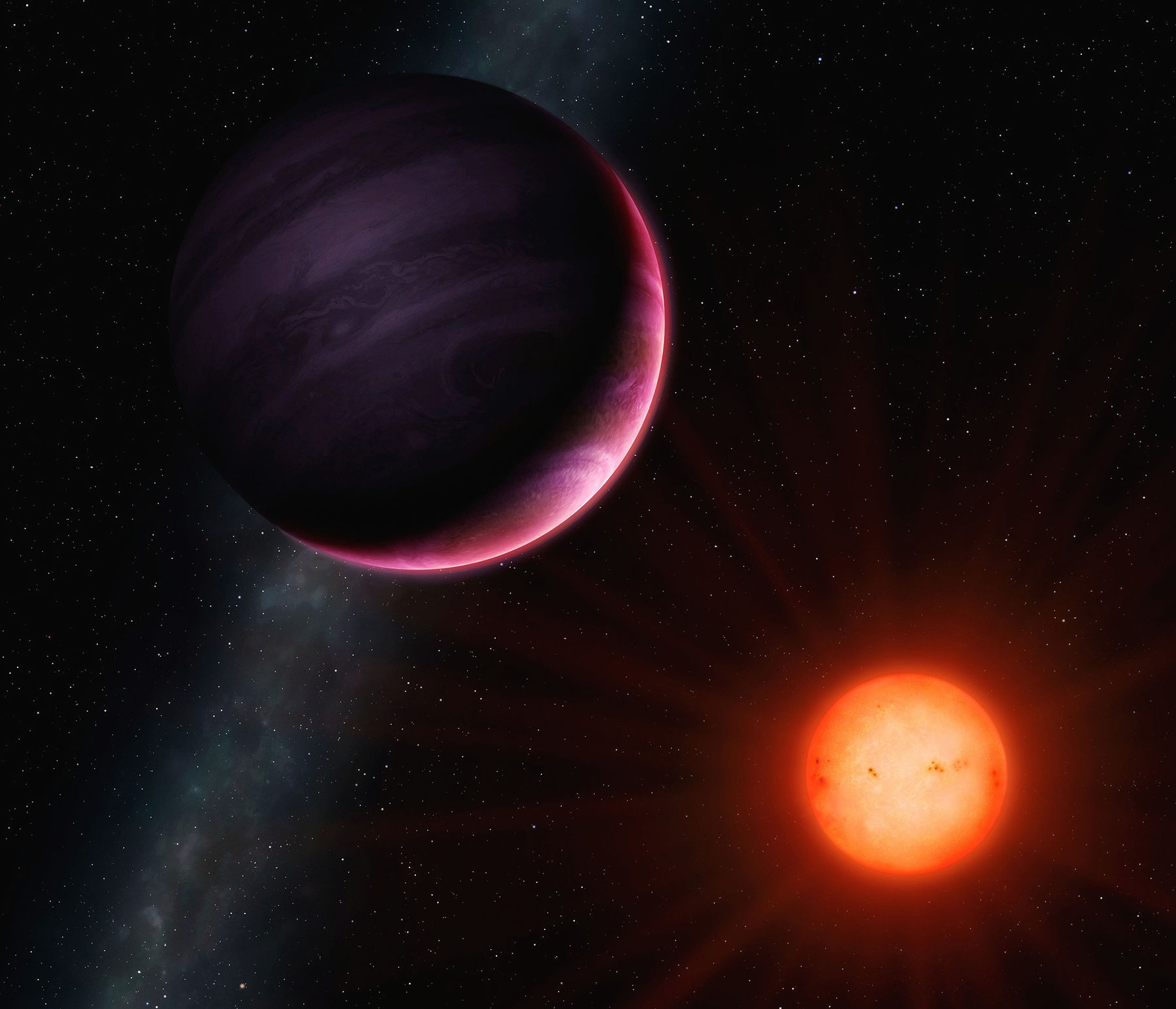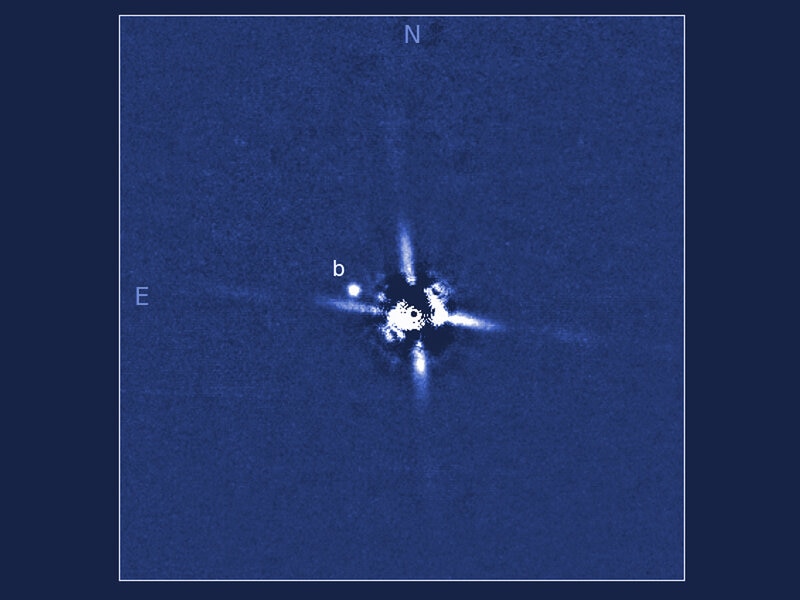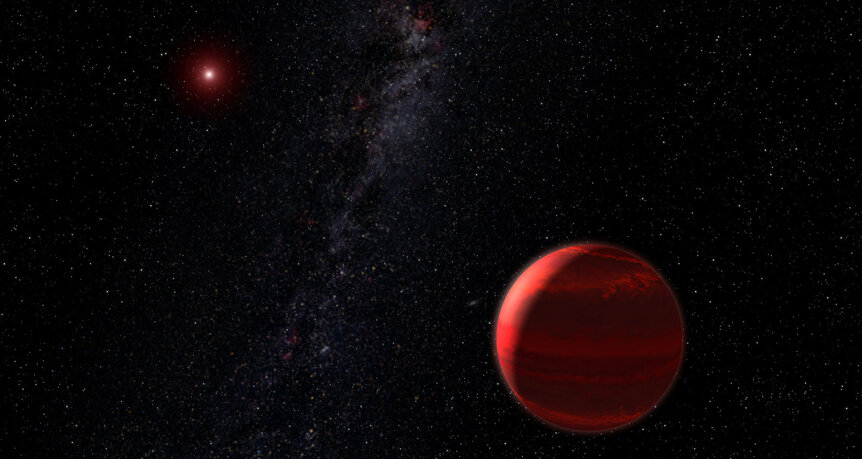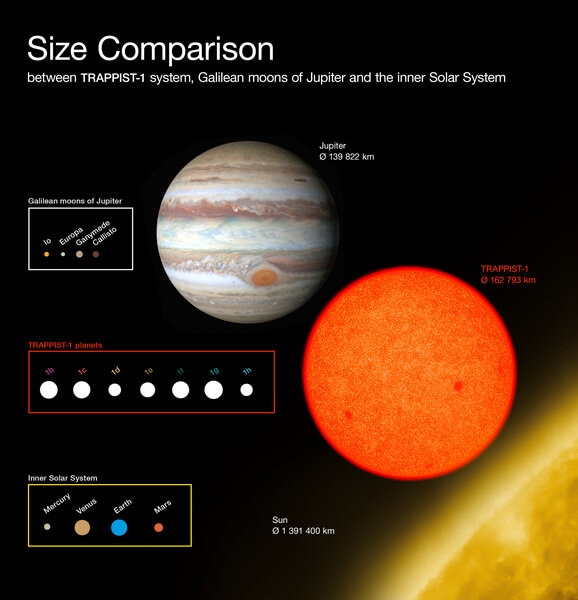Create a free profile to get unlimited access to exclusive videos, sweepstakes, and more!
Big baby planet found orbiting small baby star. Here's why that's a problem.
Small stars should have small planets.

Astronomers have found a new exoplanet. Usually when I say "new" I mean new to us humans, but in this case it's also true that it's a new planet. It's less than 5 million years old, so in cosmic terms it's a wee baby.
As with any baby — and as a parent myself I can attest to this — it is both a delight and a headache. It'll also lead to some folks reassessing what they used to think before it came into their lives.
And to push the analogy even further, how can I not share a baby picture of it?
Yes, this is an actual image of a young planet orbiting another star! The star is in the center, and it's called 2MASS J04372171+2651014, or 2M0437 for short, and the little blob to the upper left, labeled b, is the bouncing baby planet, called 2M0437b. This'll take a little bit of explaining, but stick with me because it's very cool.
Most exoplanets — worlds around other stars — are found using the transit method, when the planet creates a minieclipse as it passes in front of it stars. This requires us to see the orbit edge on. Quite a few more have been found via their gravitational effects on the star.
But there are other methods, including direct imaging: Literally seeing the planet in an image taken of the star. Planets are much dimmer than the star, so usually the star's light is dimmed considerably by blocking it (literally putting a metal bar or circle called an occulting mask in the camera to block the star; it's like putting your hand up to block the Sun when you look at the sky). In the case of 2M0437, though, the starlight was not blocked; instead its light was very carefully subtracted from the data to reveal the planet nearby.
Direct imaging works best for very young planets, because they're still glowing hot from the heat of their formation. Having giant space rocks slamming into you multiple times a day for a million years or two is bound to increase your temperature. But in this case that's a good thing: Besides letting the baby planet grow, it also means it emits a lot of infrared light (what's sometimes called thermal emission). So a telescope sensitive to IR light can see it. Also, most stars don't give off much IR, so the contrast is better too. The image of 2M0437b was taken using the InfraRed Camera and Spectrograph on the massive 8.2-meter Subaru telescope.
In this case, the star 2M0437 is part of a young group of stars all formed together in a cloud of gas and dust called the Taurus star-forming region. The star lies about 430 light years from Earth, and the other stars with it are about 2.5 million years old. One way we know they're associated with each other is that they're all moving through space together.
The planet is something like 20 billion kilometers from the star, about 4-5 times the distance of Neptune from the Sun. To check to make sure it wasn't a background star the astronomers took images over three years, and the blob moves along with the star, so it's a planet orbiting the star — if it were another star in the group it would be far brighter.
Judging by its brightness and colors (and given its young age) the best model fit shows the planet is about 3–5 times the mass of Jupiter. Beefy, but still well within the range of planetary masses. An object around 13–75 or so times Jupiter's mass is called a brown dwarf, and if it's more massive yet it can fuse hydrogen into helium, making it a true star. In this case, however, it's a planet.
A hot one, though; the temperature is around 1,200 ° C or over 2,000°F. Not a place you want to be.
But this is where things go sideways a little. The star 2M0437 is a low-mass red dwarf, probably about 1/6th the mass of the Sun. That's a bit of a problem! In general, we don't see many jovian (Jupiter-like) gas giants around red dwarfs. These dim bulbs are much better at making smaller, rocky planets like Earth (TRAPPIST-1, a nearby red dwarf, has seven Earth-sized planets orbiting it) and very rarely make big ones.
The problem is in the way we thing planets form. One way is for little bits of stuff floating around the newborn star to stick together, growing little by little until their gravity is strong enough to actively draw material in. This is called core accretion. But that takes time, and finding a planet bigger than Jupiter in such a young system is surprising (though not unprecedented, as with the very young star AS209 which has a big planet, and it's younger than 2M0437).
The other way is for the planet to form directly from the collapse of mater in a disk of material around the star. This is called gravitational instability, but it requires a pretty thick, large disk. Such disks make bigger stars, not dinky red dwarfs, so that doesn't work well either.
So how this planet formed is something of a mystery. Which is cool, because exceptions can help us understand the rules better.
Also, I want to point out again how amazing it is that we can get actual images of exoplanets! I give talks on this topic, and show a few images of them. I hadn't checked the exoplanet database in a while, though, and when I looked I got a big shock: There are 54 exoplanets found so far using direct imaging! How wow! I though it was maybe 20.
And baby 2M0437b makes 55.
Look what we do when we gaze up into the sky and get curious. Just look at it.
Literally.





























